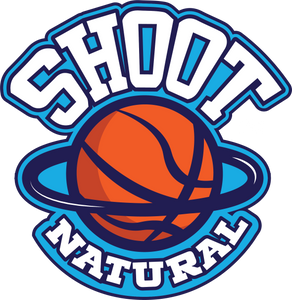The Most Important Aspects of a Perfect Basketball Shot

Developing a perfect shot is not easy at all as there's an entire process that goes into it. A big problem with that process is that everyone has different ideas on how to do it. Typically, kids start watching how your favourite players shoot and copy what they do. Later on, when they go to their first training camp, the coach there makes them shoot in a so-called “proper” way.
They may then meet a different coach down the line, who will make them change their form yet again. That's a likely reason why even top prospects who first enter professional leagues have such weird and non-optimal shooting forms.
But when you watch different successful shooters, they tend to all have different shooting forms and techniques. There lies the truth in shooting, which is that the perfect basketball shot is what makes the ball reliably go into the basket. After all, everybody is different, so there’s no one-size-fits-all shooting form. The only similarity is the goal.
Therefore, what you will read below isn't hard and fast rules, but guidelines on the most important aspects of a perfect basketball shot.
Stance and Ready Position
Having a comfortable and balanced stance is important so there’s no extra tension that will end up skewing the shot. When it comes to stance and foot positioning, there are two main schools of thought—square and lead foot forward. In this case, the lead foot is on the side of your shooting hand.
Whichever foot position you take, it should have an even weight distribution on both feet and let you transition from either catching the ball from a pass or stopping during the dribble to your ready position for the shot.
The ready position should let you catch the ball in the same way you’re going to shoot it. With that way, you can quickly and smoothly transition to taking the shot. That means the shooting hand under and behind the ball and the guiding hand on the side.
You should catch the ball with the shooting hand and elbow below the ball so you stay low on the catch and not “dip” the ball. Dipping the ball and making it swing “down-up” creates unnecessary motion that delays the release and causes extra motion the shot doesn’t need.
With the shooting hand and elbow tucked under the ball on the catch, you’ve done enough to start the shooting motion.
You should be able to catch the ball at a low position and flow smoothly into a high position as you initiate your shooting motion. That means it’s not ideal to catch the ball from an upright position as this makes you go from “high to low,” having to bend your knees upon catching the ball first before initiating the shooting motion.
But if you catch it at the low position, you can quickly go into your shooting motion without extra preparatory motion. This makes your shot more efficient.
Bringing the Ball Up
Once you’re comfortable with your stance, you’ll have to get used to how you bring the ball up for the shot. A big part of your shot’s accuracy lies in how you align your shot during this step.
As you bring the ball up, the shooting hand should align with your head and straight at the basket. The elbow should be tucked in so the whole shooting arm points straight up and in line with the basket. The shooting hand should hold the ball like it’s a pedestal, right underneath it so it’s shot with an arc as you release it. The guide hand should be on the side, gently touching the ball without any extra pressure. It’s there to make sure the ball stays on your shooting hand.
If you have trouble with keeping your guide hand from interfering with your shot, you can use the Shoot Natural™ training glove to help you learn how to use your guide hand.
Finally, mind your aim. Your eyes should be looking right at the target, which is the basket. As you bring the ball up, you should be able to see how it aligns with the basket.
With the arms positioned correctly, the elbow tucked in, the shooting hand under the ball, and the guiding hand on the side without applying any pressure, you should be able to shoot the ball straight from here.
Launch and Release
The power that propels the ball up and forwards for the shot comes mostly from the legs. The shooting hand launches the ball towards the direction of the basket with an arc, but with no extra force.
The jump of the jump shot is what will make the shot travel the distance, while the release from your shooting hand is what aims the ball towards the basket.
To make sure you impart the right amount of force, avoid shooting the ball after the peak of your jump. The power is dissipated once you start coming back down, so it’s best to launch and release the ball as you go up or just before the peak of the jump.
Shooting during the descent will make you instinctively make your shooting arm impart more force. If you muscle the shot with your arm, it will skew its trajectory towards the basket. If you muscle the shot even if you shoot it at the right part of the jump, it will be too strong.
Your shooting hand should be more focused on the arc of the shot. Having too shallow an arc will just make the ball hit the rim or board while having too high an arc will require a lot more force for the ball to travel to the basket.
Ideally, the ball goes straight into the basket without hitting the rim or the board. That makes the angle at which it comes down to the basket an important consideration. The optimal angle is above 45 degrees, on average around 51 degrees.
Once you are able to create the right arc for your shot, practice to keep making that arc at all distances. Start from right under the basket, then gradually shoot from farther and farther away.
Practice while wearing the Shoot Natural™ glove to learn how to launch and release the ball without the guiding hand interfering with the shot.
Rhythm and Follow-Through
The last but most important things you should learn and practice for your shot are rhythm and follow-through. Both of these factors let you shoot with one smooth motion and create a consistent shot.
Shooting with rhythm means being able to do every step of your shooting motion the same way every time. That means it takes you the same amount of time to shoot the ball every time you take a shot. Meanwhile, follow-through lets you impart the right amount of energy into the ball.
Once you start getting shots into the basket, you should remember that feeling and keep practising so your body memorizes that feeling. The shooting motion will eventually feel more and more natural, and that’s where you’ll start getting the rhythm and follow-through.
Conclusion
Whether you’re just starting to learn how to shoot or working to correct your shooting form, know that it will take a considerable amount of deliberate practice before your body gets used to it. When it starts “feeling right,” then that’s when it will really start to sink in. As that muscle memory develops, you will think about the action less and just have your body do it by itself.
Once you finally get it, while the work is still not completely done yet, that’s when the fun really starts. You will be able to score and contribute more in games, and you can then focus on improving other aspects of your game. Of course, you’ll only keep being good at shooting if you keep shooting, so keep shooting.

